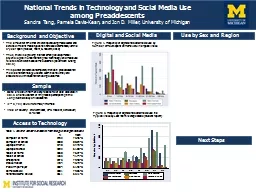PPT-How to use this technology:
Author : tatiana-dople | Published Date : 2017-10-07
Raise Hand Text Chat Powerpoint Slides Phone Please send a private message for help Call ilinc technical support at 8007994510 Voluntary Intoxication Its
Presentation Embed Code
Download Presentation
Download Presentation The PPT/PDF document "How to use this technology:" is the property of its rightful owner. Permission is granted to download and print the materials on this website for personal, non-commercial use only, and to display it on your personal computer provided you do not modify the materials and that you retain all copyright notices contained in the materials. By downloading content from our website, you accept the terms of this agreement.
How to use this technology:: Transcript
Download Rules Of Document
"How to use this technology:"The content belongs to its owner. You may download and print it for personal use, without modification, and keep all copyright notices. By downloading, you agree to these terms.
Related Documents














